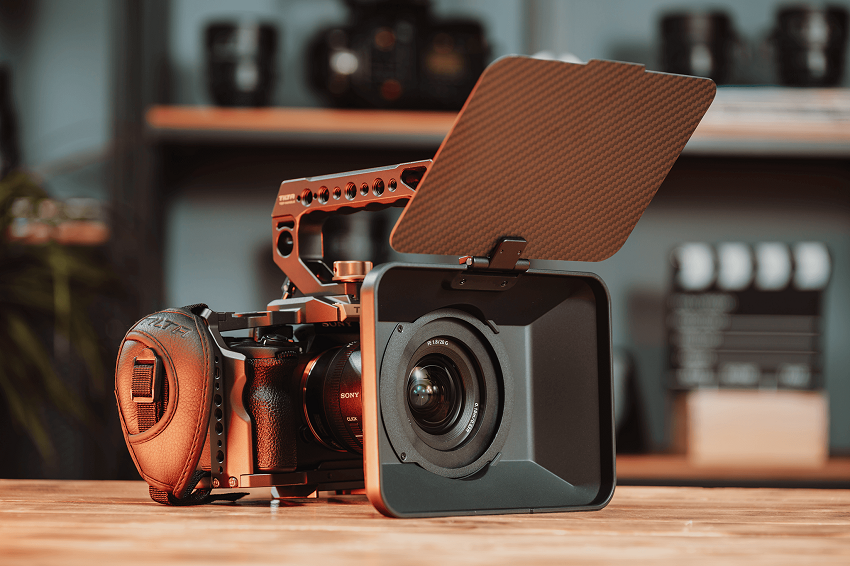If you are a filmmaker or a photographer, you might have come across the term “matte box” in your equipment list or discussions. But what exactly is the purpose of a matte box, and why is it considered an essential tool in the world of cinematography and photography? In this article, we will explore the ins and outs of matte boxes, their functionalities, and how they contribute to creating stunning visuals. This article is provided by magazinzoo.com
Introduction to Matte Boxes
A matte box is an important accessory used in filmmaking and photography that is mounted in front of the camera lens. Its primary purpose is to control and manipulate light, thereby enhancing the quality of the images or videos captured. Matte boxes are commonly used in professional setups, especially in situations where precise control over light is crucial for achieving the desired visual effect.
The Advantages of Using a Matte Box
1. Light Control and Glare Reduction
One of the main functions of a Matte Box or ND Filters is to prevent unwanted light from hitting the camera lens. This helps in reducing lens flares and glares, resulting in cleaner and more defined images. By using adjustable flags and barn doors, filmmakers and photographers can precisely control the angle and intensity of light entering the lens, giving them greater creative control over the shot.
2. Accommodation of Filters
Matte boxes provide a platform to hold various filters in front of the camera lens. Neutral density (ND) filters, polarizers, and graduated filters can be easily inserted into the matte box, allowing professionals to manage exposure levels, adjust color balance, and add artistic effects to their shots without compromising on image quality.
3. Lens Protection
A matte box acts as a shield for the camera lens, protecting it from dust, debris, and potential damage during outdoor shoots or challenging shooting environments. It serves as a buffer between the lens and the external elements, keeping the valuable glass safe and clean.
Types of Matte Boxes
1. Clamp-On Matte Boxes
Clamp-on matte boxes are lightweight and attach directly to the camera lens through a set of adaptable rings. They are more portable and suitable for run-and-gun style shooting scenarios.
2. Rod-Mounted Matte Boxes
Rod-mounted matte boxes are more commonly used in professional film productions. They are attached to a set of rods in front of the camera, providing a sturdy and stable platform for larger cinema lenses and heavy-duty setups.
Choosing the Right Matte Box
When selecting a matte box, there are several factors to consider:
1. Compatibility
Ensure that the matte box is compatible with the lens diameter and type you are using. Different lenses require different matte box sizes to avoid vignetting and other issues.
2. Number of Stages
The number of stages in a matte box refers to the number of filter slots available. Consider the types of filters you will use and choose a matte box that accommodates your requirements.
3. Build Quality
Invest in a matte box made from high-quality materials to ensure durability and longevity, especially if you are a professional filmmaker or photographer.
In conclusion, a matte box plays a crucial role in the world of filmmaking and photography. It empowers filmmakers and photographers with control over light, filters, and protection for their valuable lenses. Whether it’s reducing glare, managing exposure, or adding creative filters, the purpose of a matte box is to enhance the visual storytelling and bring the artist’s vision to life.
FAQs
Q1: Can I use a matte box with a mirrorless camera?
Yes, many matte boxes are designed to be compatible with mirrorless cameras. Just ensure you select the appropriate size and type for your specific camera and lens.
Q2: Are matte boxes only used in outdoor shoots?
No, matte boxes can be beneficial in both indoor and outdoor shooting scenarios. They provide light control, glare reduction, and protection for the lens, regardless of the shooting environment.
Q3: Can I use square filters in a matte box?
Yes, most matte boxes support square filters, especially those used in professional setups. Square filters offer more flexibility in positioning and allow for creative adjustments.
Q4: Do I need a matte box for smartphone videography?
While matte boxes are primarily used in professional setups, there are some smartphone-compatible matte boxes available for enthusiasts who want to elevate their smartphone videography game.
Q5: Can a matte box replace post-processing adjustments?
While a matte box can enhance the visual quality during shooting, post-processing adjustments remain essential for fine-tuning and adding artistic effects to the final output. A combination of both can lead to impressive results.

